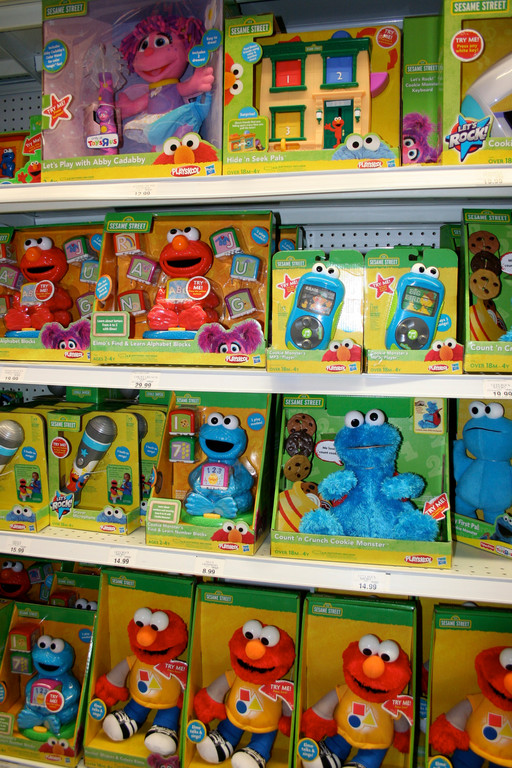Toy safety remains a concern
Shop smart
The New York Public Interest Group released the 26th annual “Trouble in Toyland” safety survey last week stating there are still toys on local store shelves that pose a safety hazard.
According to the nonprofit organization Kids in Danger, the majority of all toy injuries involve children under three years old. For this reason, researchers visited toy stores in September and October 2011 to identify potentially dangerous toys – toys that could cause a toxic, choking, strangulation or noise hazard.
Consumers should be aware that “the Consumer Product Safety Commission does not test all toys, and not all toys on store shelves meet CPSC standards,” said author Nasima Hossain, a public health advocate with U.S. PIRG Education Fund. “There is no comprehensive list of potentially hazardous toys.”
At least 17 children under 15 years old died in 2010 from toy-related injuries, stated the CPSC, and more than 250,000 children were treated in the emergency room for toy injuries in the same year.
One toxic chemical that NYPIRG wants parents to avoid is lead. Lead was banned in household paint, cookware and products marketed to children in 1978, but is not yet banned in toys. “Lead is widely used in other countries and can be found on imported toys,” said Hossain. The CPSC has already recalled nearly 200,000 units of toys for lead this year, including a lapel pin from Build-A-Bear.
The Consumer Product Safety Improvement Act of 2008 was modified in 2011 to enforce stricter lead standards. With the amendment, new toys cannot exceed 100 parts per million of lead, but existing toys under 300 ppm can be sold. This is still higher than the American Academy of Pediatrics recommendation, which state that toys should only contain trace amounts of lead; less than 40 ppm.
Cadmium is another concern for NYPIRG. “Cadmium is a heavy metal that many analysts believe has replaced lead as a ‘go-to’ additive in children’s jewelry,” said Hossain. “A recent study showed that young children who mouth or swallow jewelry containing cadmium may be exposed to 100 times the recommended maximum exposure limit for toxic metals.” In high doses, cadmium is a known carcinogen, according to the Department of Health and Human Services National Toxicology Program.
There is currently no federal law limiting cadmium use, but states, including California, Connecticut and Maryland, have enacted laws. However, CPSC is taking steps to initiate mandatory guidelines for cadmium use in children’s jewelry.
In 1979, CPSC banned toys with small parts for children under three. However, the NYPIRG reports states that choking hazards are still found on store shelves. “On October 14, 2001, the Henry Gordy firm was fined $1.1 million for failure to report a choking hazard of small pliable, plastic darts from a dart gun, resulting in the deaths of four children,” said Hossain.
“Balloons pose a grave choking hazard to children, causing more choking deaths than any other children’s products,” the NYPIRG report states. Around 40 percent of choking fatalities reported to CPSC between 1990 and 2010 involved balloons. For this reason, balloons and other choking hazards contain warning labels.
A noisy toy is also a safety hazard. According to the most recent report in the Journal of the American Medical Association, around 15 percent of children ages 6 to 17 show signs of hearing loss. To protect hearing, researchers suggest avoiding toys that seem too loud, placing tape over speakers to lower the sound, removing batteries in loud toys and reporting loud toys to the CPSC website, www.saferproducts.gov.
While the toy safety survey did not identify any strangulation hazards, more than 15 toys were recalled and more than two million toys were taken off the market in 2011 for being a potential strangulation hazard. More than 40,000 articles of children’s clothing were also recalled in 2011 because of this hazard. Survey author Hossain says parents should remove drawstrings from upper outerwear clothing in sizes 2T to 12 and buy clothes with snaps and buttons instead.
The following is a list of potentially dangerous toys:
- Funny Glasses by Joking Around
- Sleep Mask by Claire’s
- Little Hands Love Book by Piggy Toes Press
- Hello Kitty eyeshadow/keychain by Hello Kitty
- Tinkerbell Watch by Disney Fairies
- Honda motorcycle by Honda
- Sesame St. Doll Oscar by Sesame Workshop
- Elmo’s World, Talking Cell Phone by Fisher- Price
- Hotwheels, Super Stunt Rat Bomb by Hotwheels
See the entire list at www.nypirg.org.






